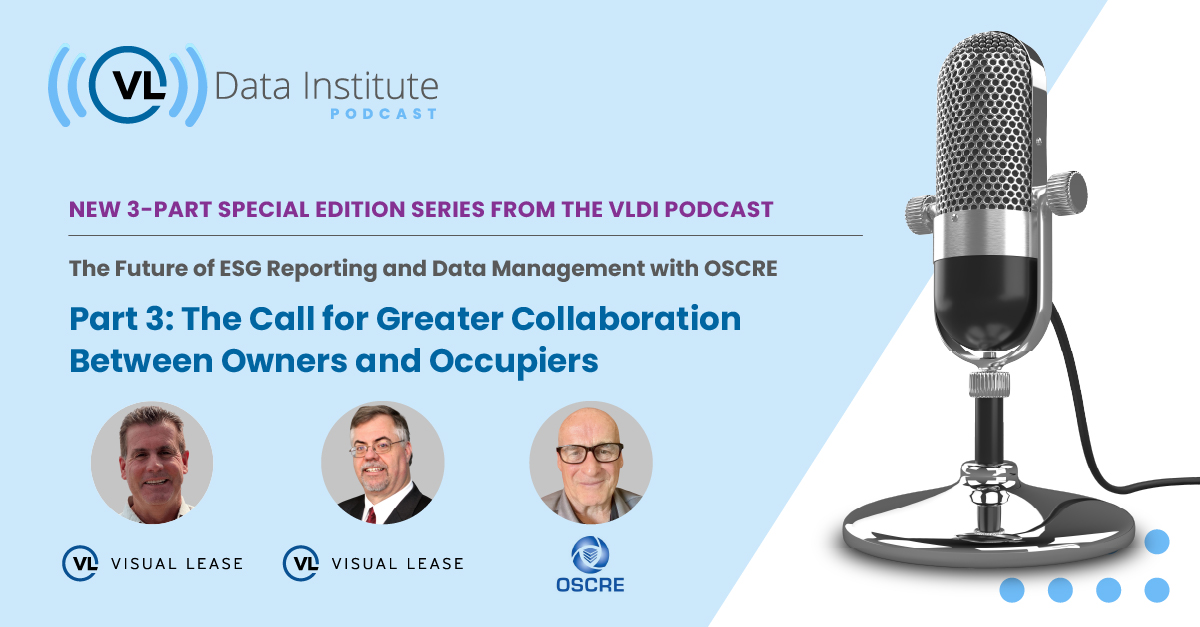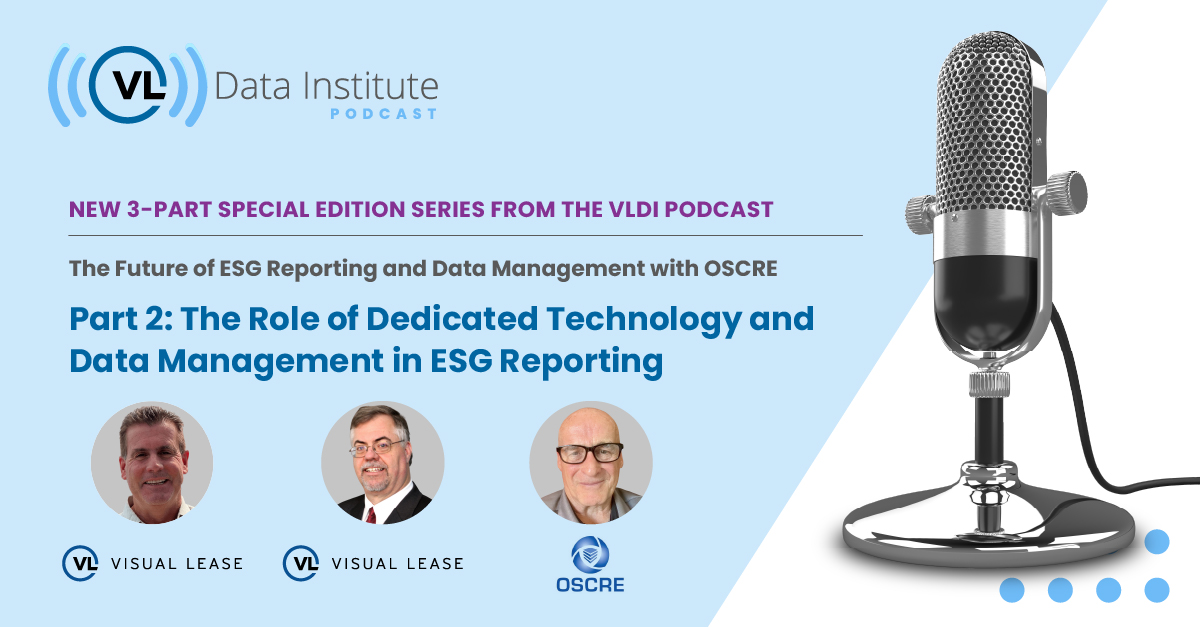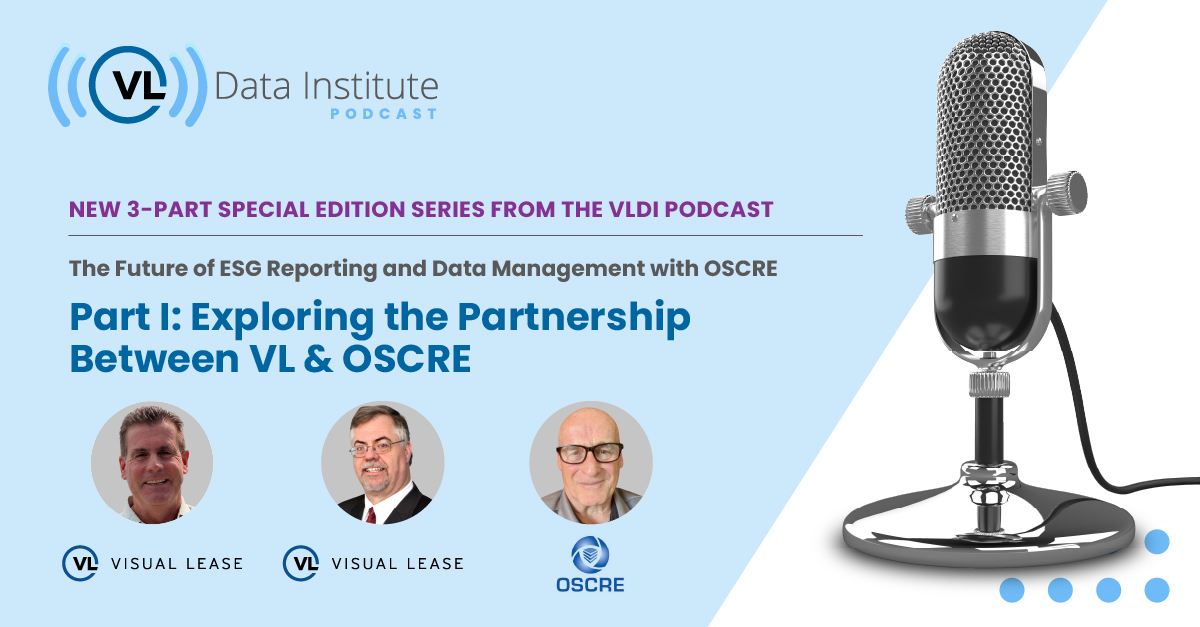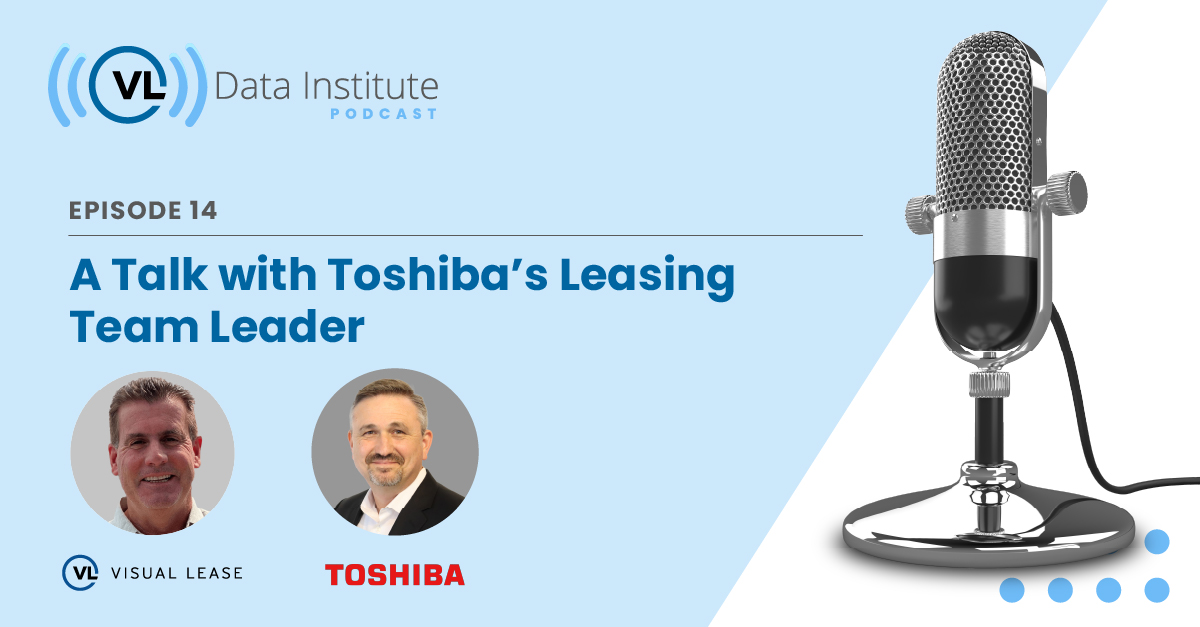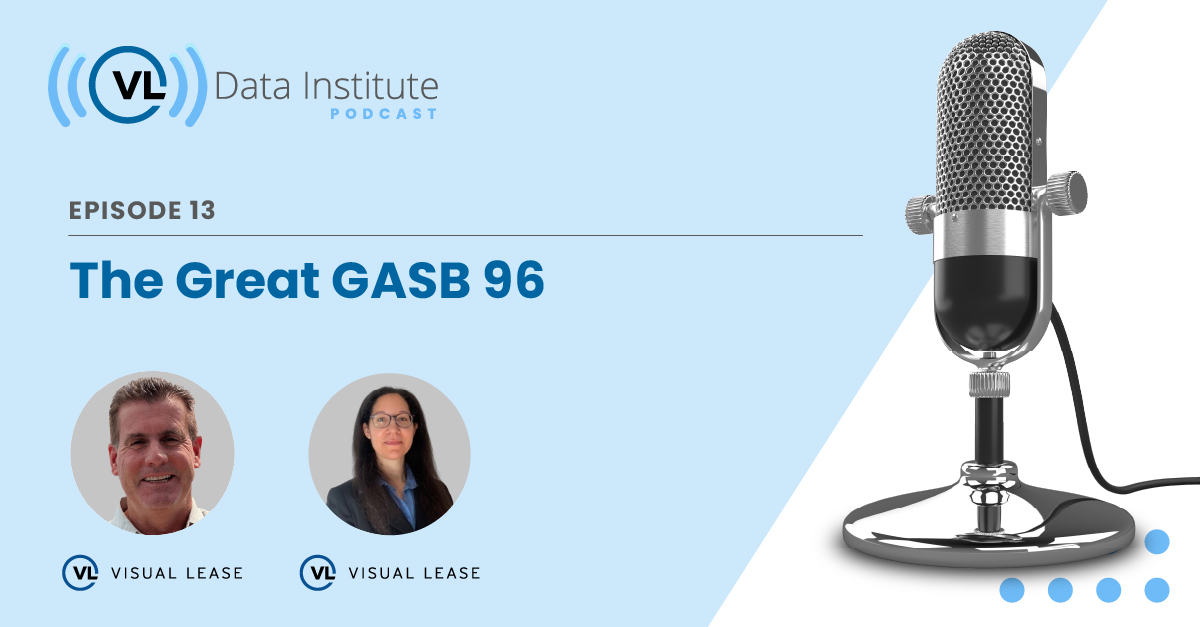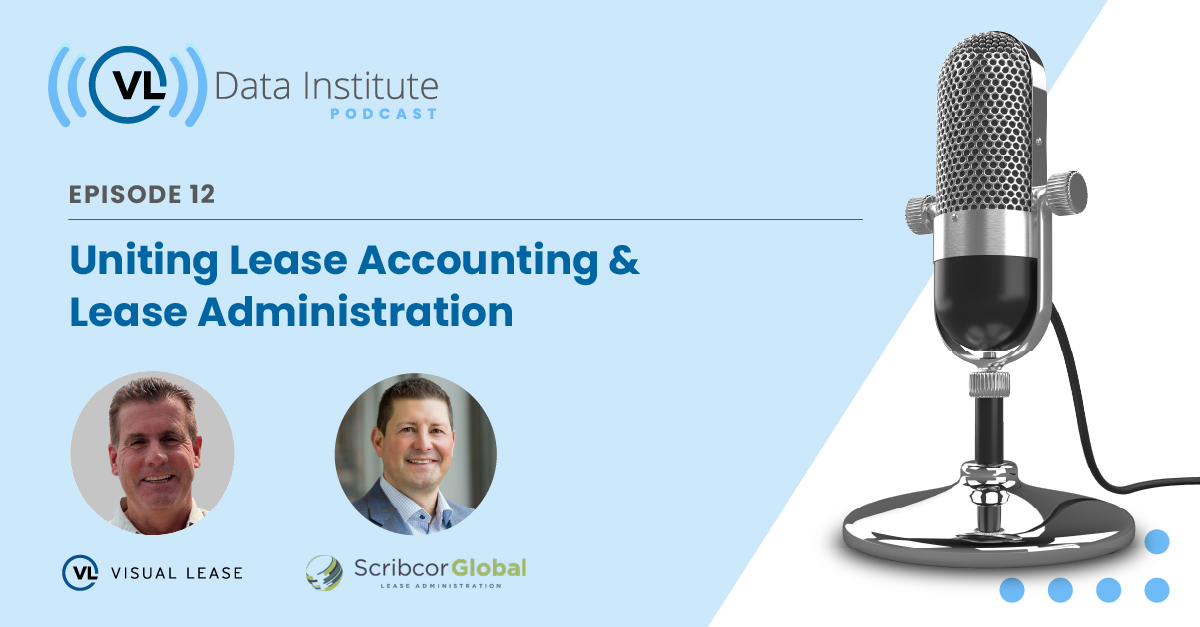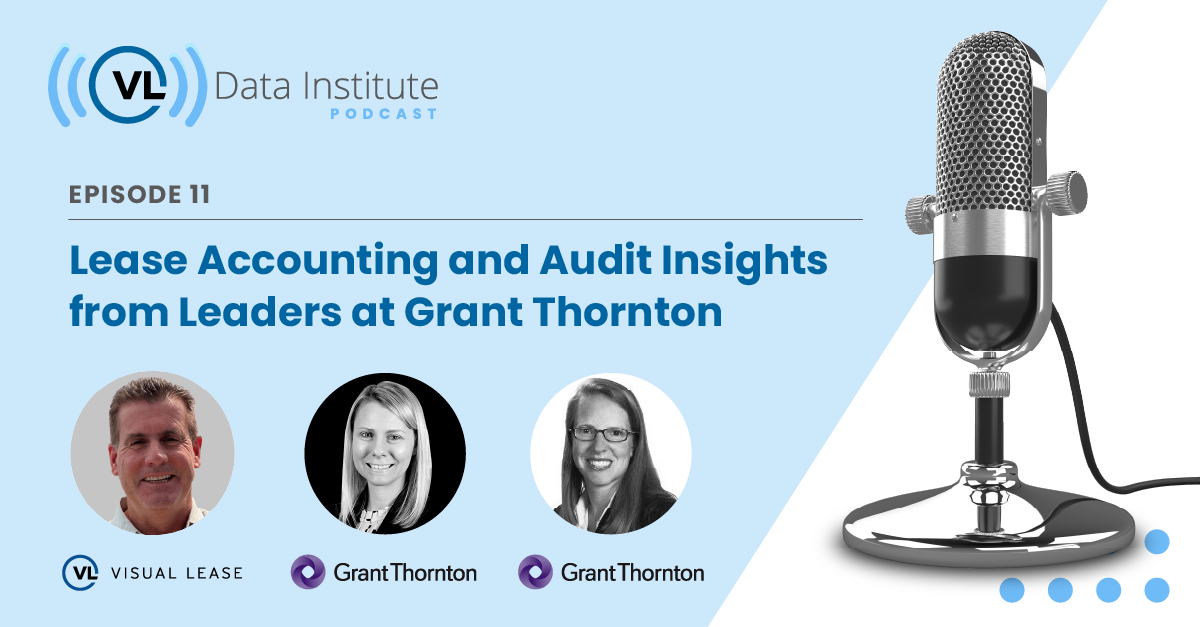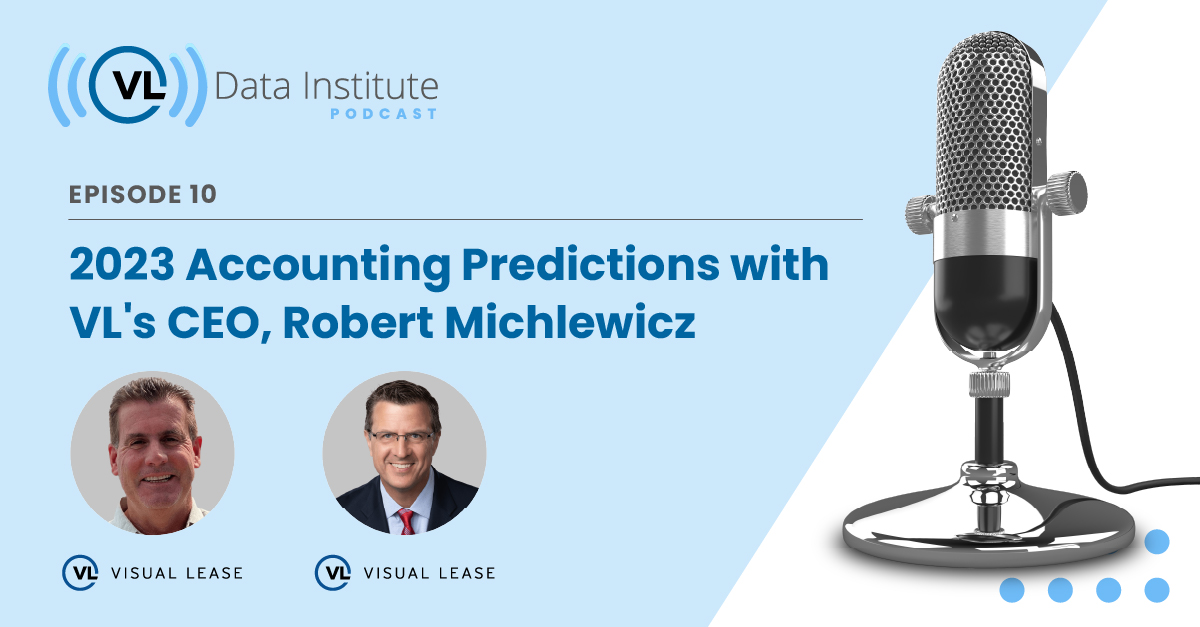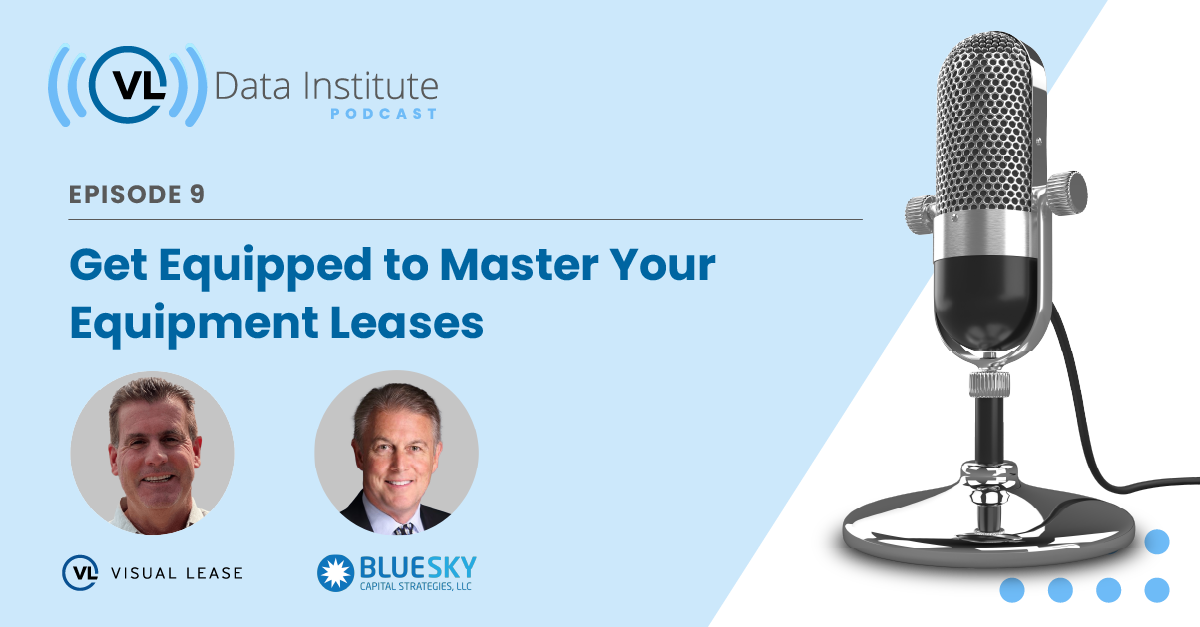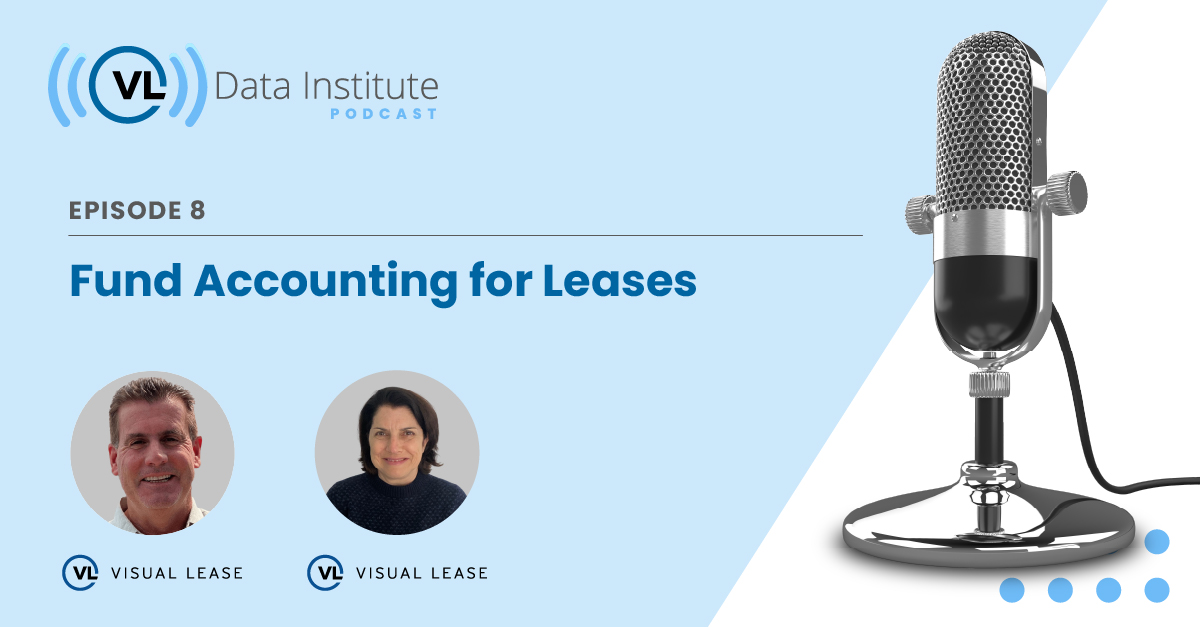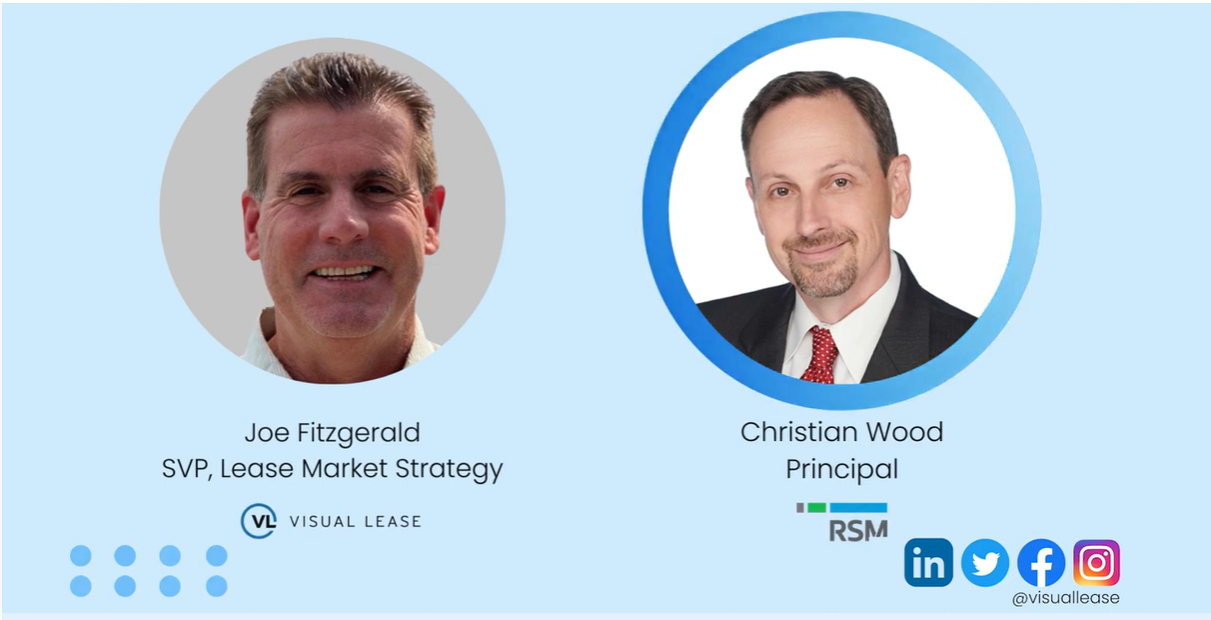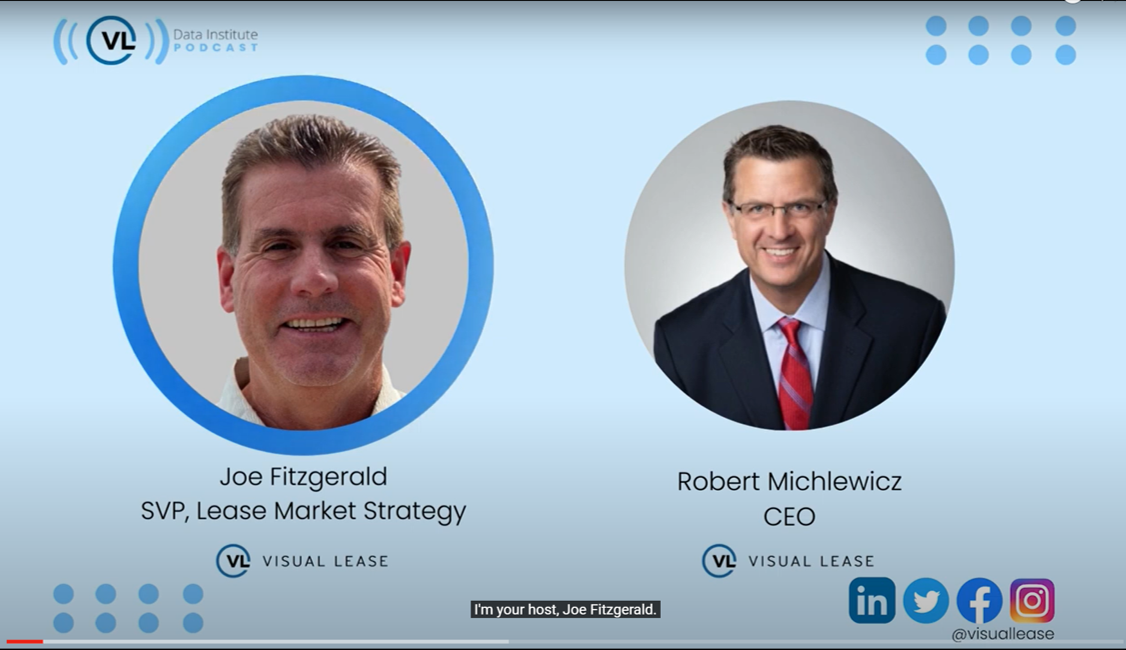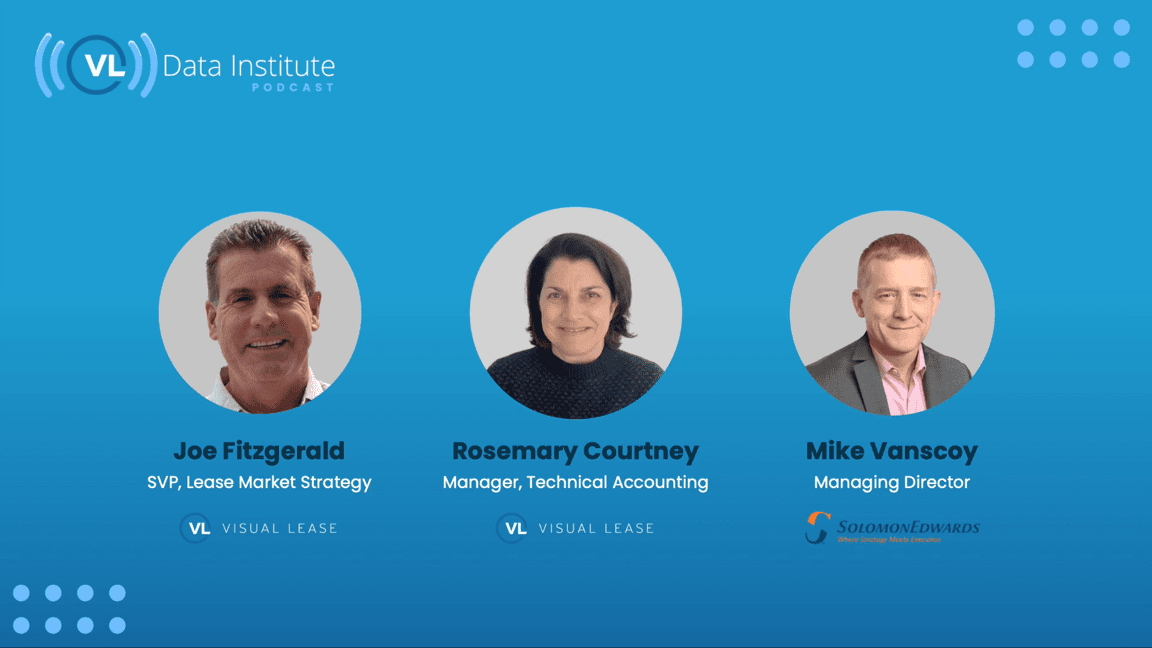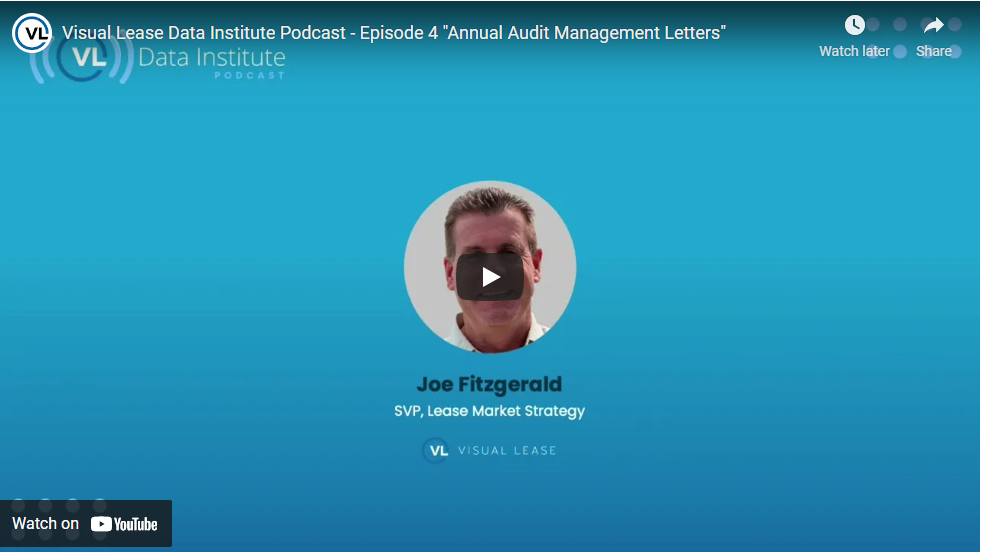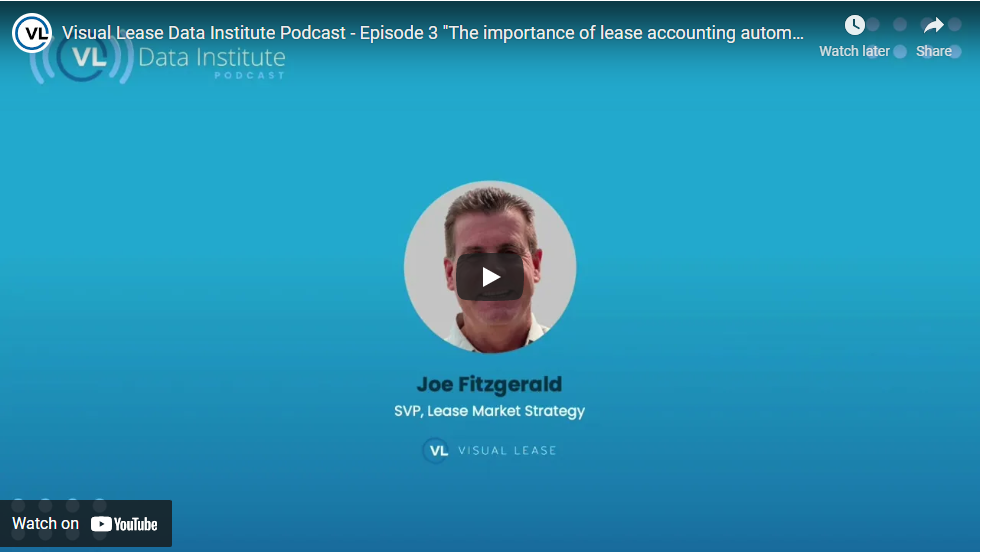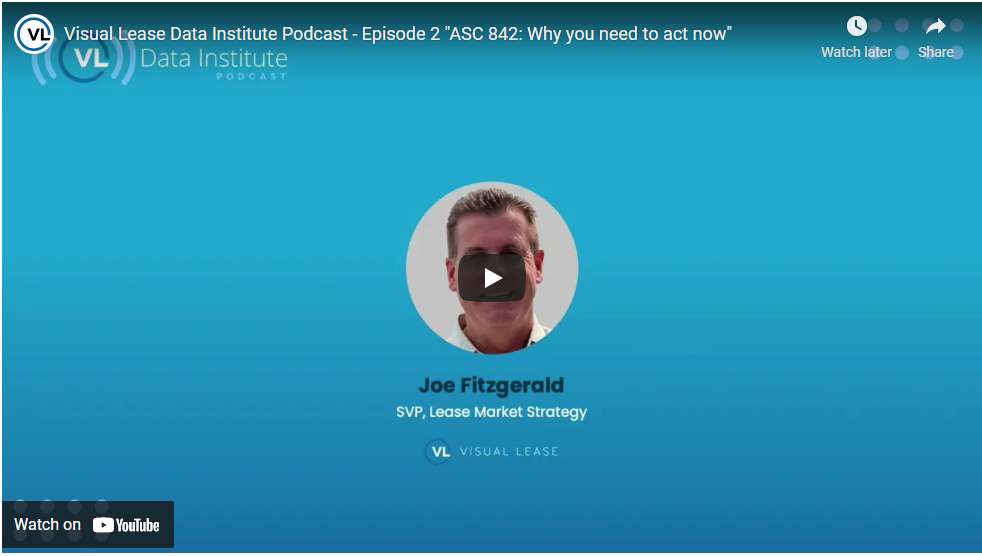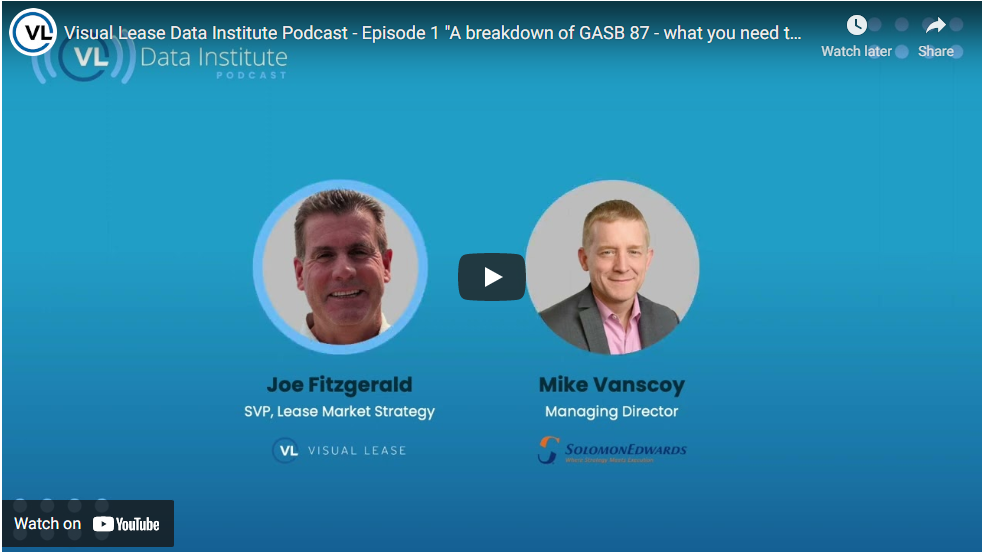What are the nuances of GASB 96? And how does the accounting standard compare to GASB 87? Zena Thomas, Lease Accounting Product Owner at Visual Lease, breaks it down in just five minutes on the newest episode of The VLDI Podcast. Don’t miss this opportunity to stay informed and stay ahead of what’s ahead.
Read Transcript
VLDI Podcast Episode 13 Transcript
Joe:
Hi. I’m your host, Joe Fitzgerald. Welcome back to the Visual Lease Data Institute podcast. Here at VL, we empower organizations to leverage your lease portfolio as a strategic asset. Our platform is uniquely designed to meet the needs of every team that interacts with a company’s lease portfolio to reduce risk, drive confidence and sustain lease accounting compliance, and provide the visibility required to make agile business decisions.
Today we are joined by Zena Thomas, Product Owner at VL. With over 20 years of accounting experience, Zena has worked in corporate accounting and as an auditor within financial institutions and BOEs. Zena has led projects on corporate inter-company automations and developed corporate ERP education for company mergers. As a Lease Accounting Product Owner at Visual Lease, Zena is responsible for creating models for new products, user acceptance testing and research of accounting guidance.
Today, Zena is here to discuss key information regarding the GASB 96 lease accounting standard. Hello Zena. Thanks for joining me today.
Zena:
Hi, Joe. Thank you for having me.
Joe:
Could we open up the conversation with you describing your role at VL in a bit more detail?
Zena:
Sure. I’m the Product Owner of Lease Accounting, which means that I assist in prioritizing our features for development. So I speak with clients to ensure that our software is satisfying their accounting requirements and I assist in developing new accounting products.
Joe:
Very much on the front end. So what exactly is GASB 96?
Zena:
GASB 96 is the accounting treatment for subscription-based information technology arrangements. It’s GASB’s response to questions around accounting treatment for software. Many entities were already capitalizing on these costs, and they were looking for GASB to justify that treatment. Similarly, to GASB 87, it creates a right of use asset and a liability for the lease term of these software arrangements.
Joe:
So many of the government entities that will be complying with GASB 96 are just coming off what sounds like a similar accounting standard, GASB 87. Could you give us a bit more of a compare and contrast between the two standards?
Zena:
Sure. GASB 96 is very similar to GASB 87. Our amortization schedules will almost be identical. The difference comes in when we are in the beginning stages of these software agreements. GASB defined three implementation stages for 96, whereas we won’t have those for 87. The first being a preliminary stage which costs are associated with the conceptual framework of the subscription asset.
These are usually expenses as they incurred. The second is the initial implementation stage, which is all the cost associated in placing the asset into service. These costs, for the most part, are capitalized and the final stage is the operation and additional implementation stage. These are for troubleshooting, maintaining the software and other ongoing activities. In this stage you may have a mix of capitalization and expense cost.
Joe:
Assuming an entity decided to leverage a technology solution for GASB 87, Could that technology also be used to enable adoption of GASB 96?
Zena:
They could, but it would be. They have to be careful around the terminology and around reporting. GASB 96 has to be separate from 87 disclosures. So, currently if you’re using 87 calculations to predict 96 measurements, that’s fine. But you really want to use a specific GASB 96 platform.
Joe:
So VL as its designed, how would it handle it?
Zena:
So currently, if the customers are eager and want to calculate 96 on 87, they would do that, but they would then have to transition over to our 96 module.
Joe:
So it’s a good way to kind of handle both standards almost simultaneously you’re saying.
Zena:
Exactly.
Joe:
With that in mind, any closing thoughts?
Zena:
I would say if an entity is already prepared for GASB 87, they should start thinking about their 96, it’s approaching quickly. If they are just beginning GASB 87, they should gather data for 96 at the same time. Just so it’s a kind of a one shop stop. Currently, a lot of GASB clients are a little delayed in developing their GASB 96 material, so they have time.
Joe:
That will conclude today’s episode of the VLDI podcast. Zena, thank you so much for coming on to the show and sharing your expert knowledge on GASB 96. If you have enjoyed this episode and want to catch up with other resources from the Visual Lease Data Institute, be sure to follow our LinkedIn, Twitter, Instagram and Facebook pages @Visual Lease, as well as our new LinkedIn community page.
Links to all our pages will be in the YouTube description box. And don’t forget to tune in to the next episode of the Visual Lease Data Institute Podcast, where our focus is on helping you leverage your lease portfolio as a strategic asset.











